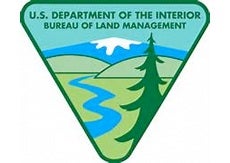 WASHINGTON, D.C. ŌĆō The Bureau of Land Management, which is responsible for overseeing 245 million acres of the nationŌĆÖs public lands, has issued its final ŌĆśPlanning 2.0ŌĆÖ rule that will update how the agency plans for land management in the West.
WASHINGTON, D.C. ŌĆō The Bureau of Land Management, which is responsible for overseeing 245 million acres of the nationŌĆÖs public lands, has issued its final ŌĆśPlanning 2.0ŌĆÖ rule that will update how the agency plans for land management in the West.
The most significant change is the establishment of three additional public input periods early in the planning process to increase transparency and allow for more robust public involvement. Sportsmen and women are hopeful that these changes will increase public satisfaction in the land-use planning process and eventual management of public lands.
ŌĆ£Public lands are an asset to every American, and even though land-use planning has always been a public process, Planning 2.0 will allow people to weigh in early and often about the land-management decisions that impact the places they hunt and fish,ŌĆØ says Whit Fosburgh, president and CEO of the Theodore Roosevelt Conservation Partnership. ŌĆ£It doesnŌĆÖt matter if you live in central Montana or southern New Mexico, you will now benefit from having a better seat at the table when the BLM is considering how to manage your public lands, and that means more opportunities to sustain quality hunting and fishing.ŌĆØ
Because of this, support for Planning 2.0 has come from sportsmen, but also from community leaders in Colorado, Montana, and California counties where Planning 2.0 principles were road-tested.
ŌĆ£As an elected official representing a rural Western county, I believe the BLM’s revised planning efforts are helping us get ahead of the game, by increasing opportunities for public input and allowing all parties to roll up their sleeves and get involved before land management decisions are set in stone,ŌĆØ says Mike Brazell, a county commissioner in Park County, Colo. ŌĆ£This thorough pre-planning will help to better manage landscapes for all the ways they are usedŌĆöwhether it be for hunting, fishing, trailrunning, timber production, or energy developmentŌĆöand support our communityŌĆÖs ability to maintain a high quality of life and healthy local economy.ŌĆØ
Migratory wildlife will also benefit from better management and conservation in the new planning rule. Where there once was no specific mention of wildlife migration corridors in BLM planning documentation, now field offices must consider identifying and locating migration corridors early in the process of planning for land use. ThatŌĆÖs good news for big game animals and hunters.
ŌĆ£Migration corridors are a vital habitat component for big game like mule deer, elk, and pronghorn antelope in the West,ŌĆØ says Miles Moretti, president and CEO of the Mule Deer Foundation. ŌĆ£WeŌĆÖve long seen the need for more formal recognition of these areas, where animals move, feed, and rest between seasonal ranges, and weŌĆÖre confident that identifying these corridors early in the planning process will reduce conflicts, while yielding better experiences afield for sportsmen and women.ŌĆØ
More than 8,400 hunters and anglers have signed a petition and sent letters of support for better BLM land-management tools that prioritize public access, conserve and enhance habitat, and balance development with the needs of fish and wildlife. More than 500 hunting and fishing businesses, sportsmenŌĆÖs groups, and wildlife professionals have also backed the idea that BLM lands are ŌĆ£SportsmenŌĆÖs CountryŌĆØ and should be managed in ways that support sportsmenŌĆÖs values, including habitat conservation and access.
To learn more about Planning 2.0, visit here.
http://sportsmenscountry.org/